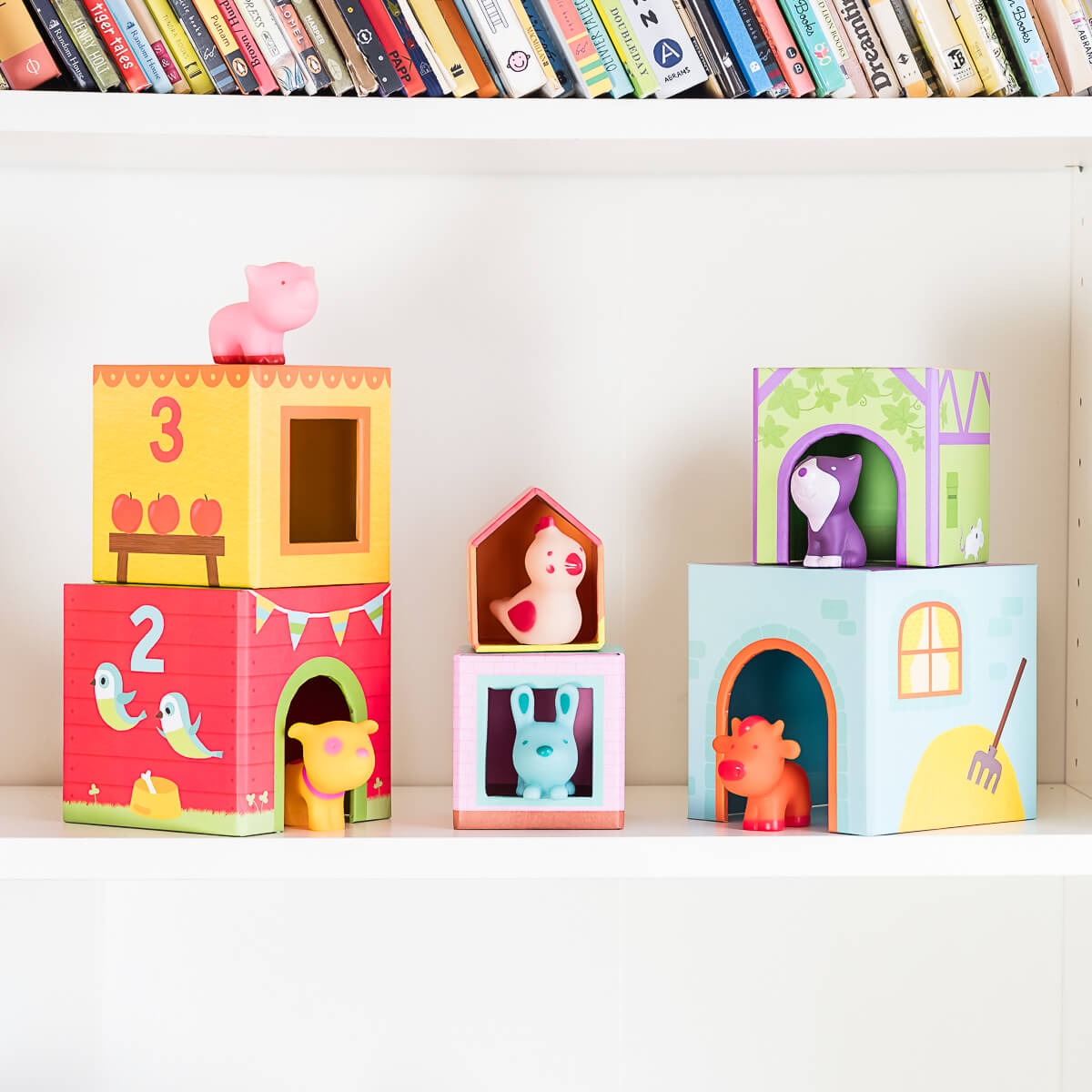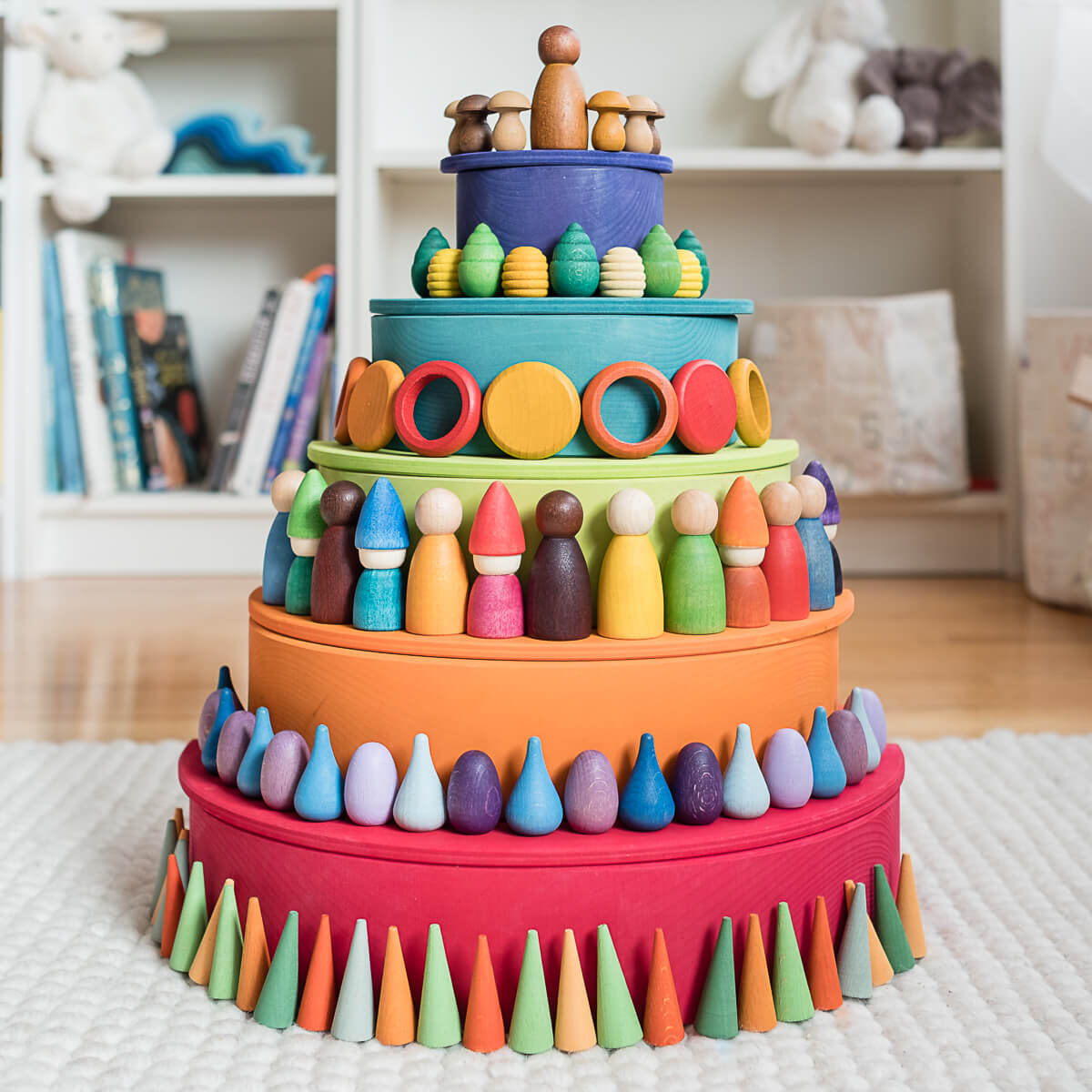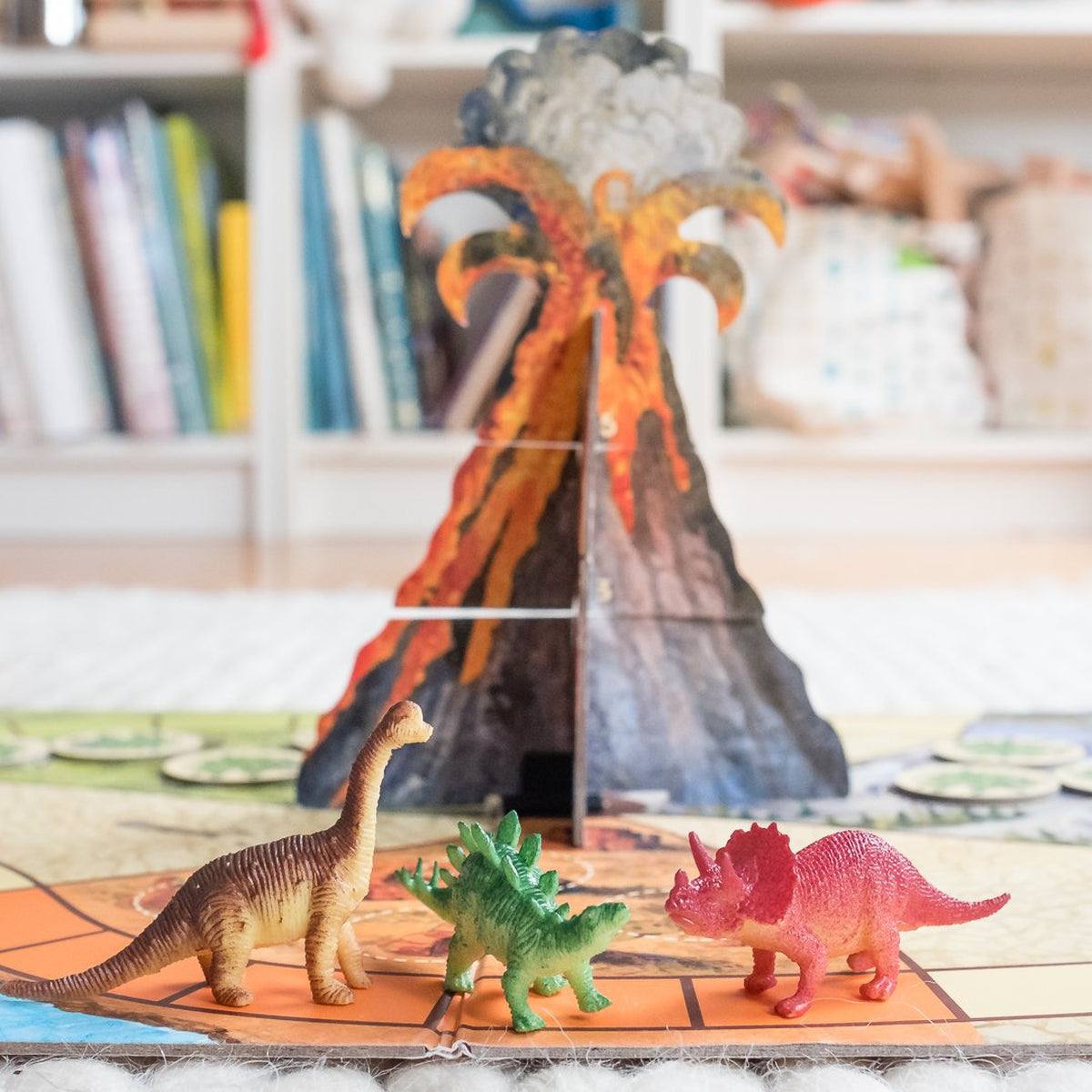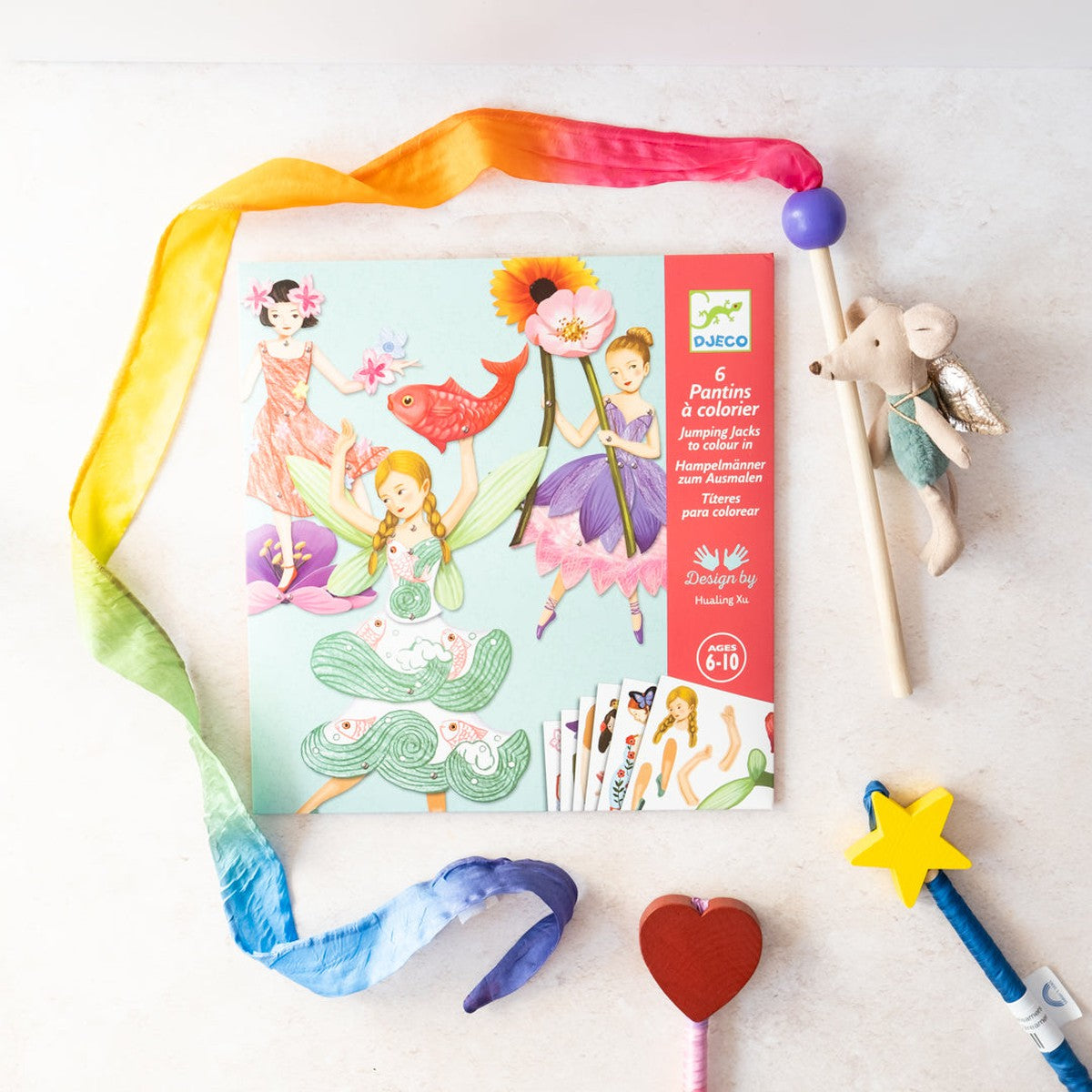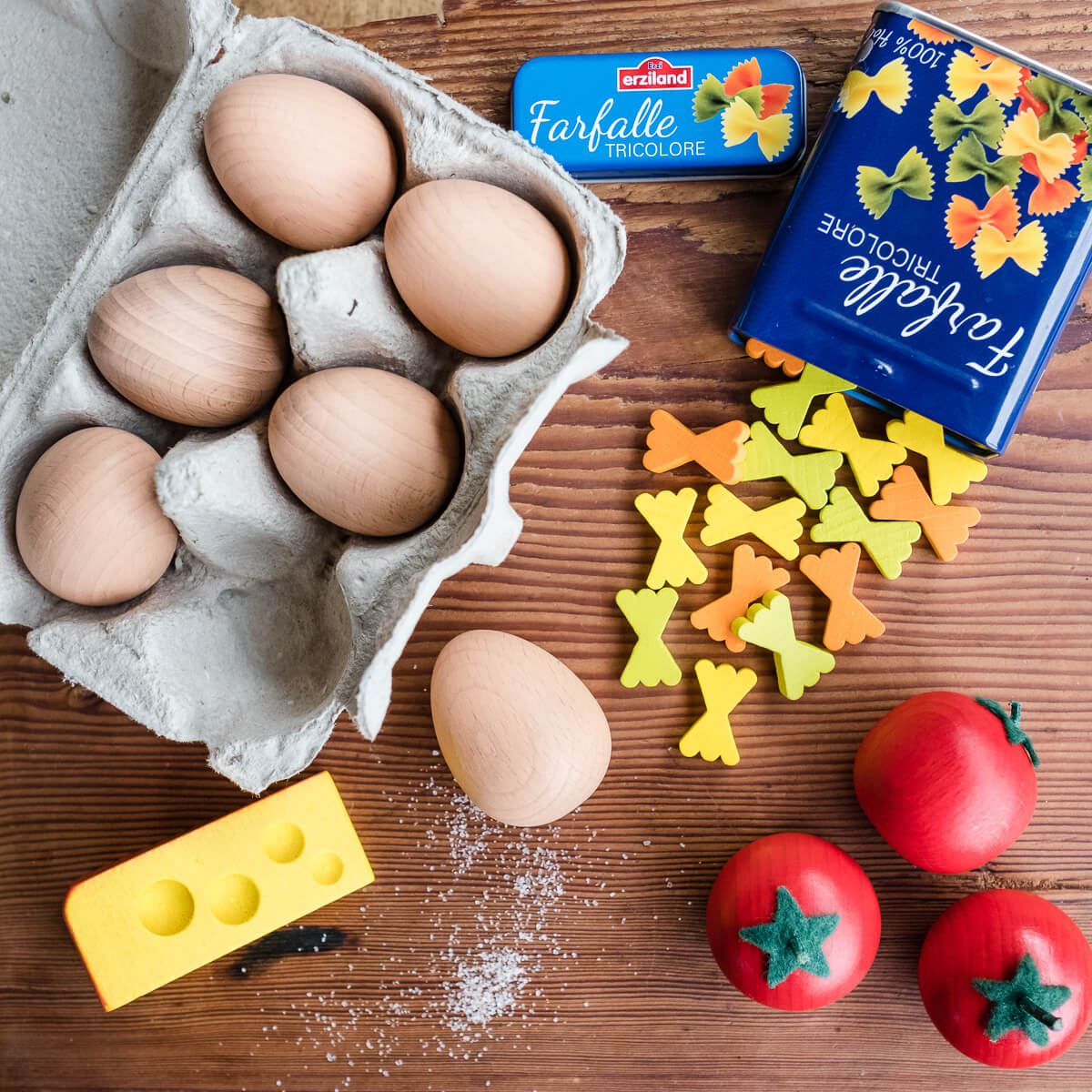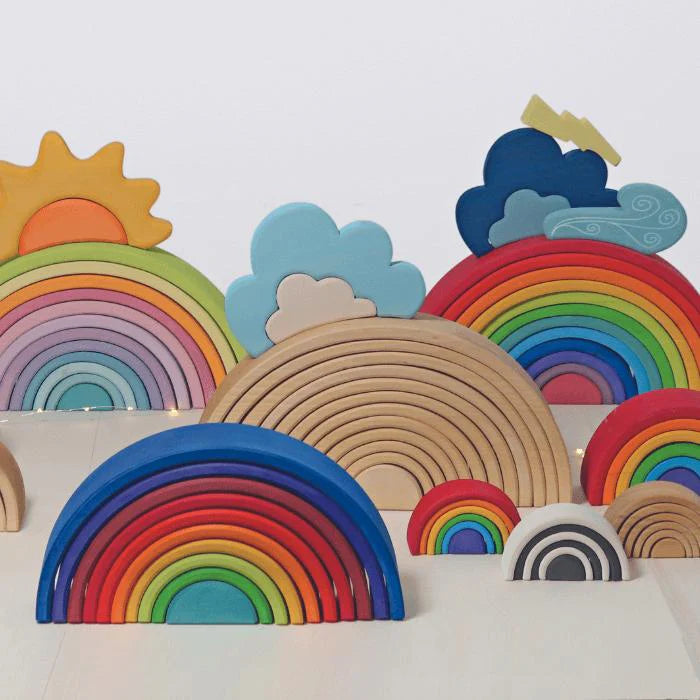Grimms Wooden Rainbows have become the poster child for open ended, imaginative play. It’s hard to find a play inspo blog or Instagram account that doesn’t have a rainbow (or three!) on their toy shelves.
What in the world makes these rainbows so special? Is it worth all the hype?
In our opinion, yes absolutely, but with a few caveats (I want to be 100% honest about who it’s NOT for and what it CAN’T do - jump to the end for that).
First off, a few reasons we love the rainbow.
Variety of Play Opportunities. It can be used for many, many different kinds of play (keep reading for examples). There are SO MANY ways you can play with rainbow - it’s impossible to actually list them all. And kids are constantly showing me new things to do with it, even after more than a decade of selling rainbows.
High Play Value. It has incredible play value since kids love and play with rainbows for several years. Most kids will enjoy playing with the rainbow from as young as 2 years old to as old as… well, I still like playing with it and I’m in my 40’s so I’m not sure what the upper age limit is!
Toys that are truly open ended and need a child to breathe life into them are usually the ones that have extraordinary play value. These make them great investment pieces since the higher price point can be averaged out over a long play period of years and years.
Just So Beautiful. Grimms rainbows are stunning, vibrant and endlessly inspiring. It’s one of those toys that sparks joy just by being there.
So what kind of play EXACTLY does the rainbow support? Here are our top ten favourite ways to play with rainbows.
Imaginative, Open Ended Play That Builds Creativity
1. Tunnels and bridges for vehicle play. Calling all car lovers, future engineers and city planners! Each coloured arch can easily become a bridge or a tunnel for cars and trucks to zoom about. Or, create a beauty of a foot bridge for figures or animals to cross. The arches can balance well on blocks too, so feel free to create bridges between block towers.
2. Towers for figures, small stuffies etc. Stack the arches high and create a little animal apartment building or wonderland. This is an excellent test of balance and dexterity. Nothing beats that look of pride a kid gets when they get every piece stacked up and balance some little animals or figures on each arch.
3. Animal enclosures or paddocks. Got an animal lover? So do we, so we often make little animal homes and enclosures with our rainbow. Flip the arches on their sides to make little circles. Voila! Perfect animal paddocks for farm or zoo play (or dino enclosures in your very own Jurassic Park!).
4. Landscapes - create mountains and caves with the arches. Stack the arches in a million ways to create rolling hills for goats or any other little critters to roam and climb. Or tuck a few arches together for an animal to find cozy shelter in. This is awesome for both imaginative play.
5. Beds and rockers. Little dolls or figures can take a load off and relax in a richly coloured, smoothly rocking little bed. Or make a “ride” for a small stuffed animal or doll to rock away in a toy amusement park.
gorgeous monochrome rainbow cake photos from outlittlechaos and her great blogpost
6. Cakes (large rainbow + semi circles). The combination of a large rainbow with semi circles opens up a whole new world of play. Create gorgeous wooden cakes with layer upon layer to decorate. We love to use Grapat’s Loose Parts to decorate (pictured here) but you could also use small animal figures or found objects like acorns.
7. Skyscraper towers (large rainbow + semi circles). This might be my favourite, and you’ll see this often in window displays at our store because it’s just such a fun thing to build. The combination of a large rainbow and semi circles turns the rainbow into either a tall skyscraper of a building or several smaller dwellings to create an instant little village.
gorgeous monochrome rainbow photos from outlittlechaos and her great blogpost
8. “Stacks”. There are so many stacks to try out! Pinterest is chock full of stacking inspiration, or feel free to make up your own! Balancing the arches is incredible brain building work, whether you’re trying to replicate a certain design or just free building. Lots of opportunities for critical thinking and problem solving, not to mention focus and perseverance.
gorgeous monochrome rainbow photos from outlittlechaos and her great blogpost
9. Simple ball runs. Everyone loves this one! The arches can be nested on their sides to create a “groove” for a ball to travel. So fun, and excellent brain exercise as well. Trouble shooting ball run construction is perfect for little engineers.
gorgeous monochrome rainbow photos from outlittlechaos and her great blogpost
10. Sorting and matching. Lay out the arches and get your kiddo to sort objects into categories. Send your kid out on a hunting mission around the play room for objects to add, or if your child is too young for that, you could always give them a selection of objects to sort into the right arch circles. Sorting is a fun little brain booster that kids really love to do and builds their logical thinking skills. Sort items into categories, like colours, land vs ocean animals or what letter things start with.
Small vs Medium vs Large
The rainbows come in three sizes - small, medium and large. What size should you buy? In general, we find the small rainbows are really only great for very small figures, or as a beautiful accent on a bookshelf. They don’t get as much play as the other sizes. The most play value sizes in our opinion are the medium and the large.
ALL of the above pictures feature large rainbows, so take a look for the sense of scale with figures and stuffed animals.
Which scale is right for you is really dependent on the size of creations you want to make.
If you want larger impact - bigger towers, more difficult balancing challenges or the ability to create bigger animal homes or bridges and tunnels for larger cars, then the large rainbow is your best bet. Or, if your’re interested in adding the semi circles to build skyscraper towers or cakes, the large rainbow is the right size for you.
If you want to make animal homes for smaller figures, or bridges and tunnels for small scale cars (like matchbox size) the medium rainbow works great!
Here are a few images below of medium sized rainbows to show you what they look like in use.
Caveats
I promised to tell you the pros and the cons of the rainbow - so here are a few caveats you should consider before buying a rainbow.
It’s just a toy.
The rainbow is not some magic bullet that will transform your playroom into an inspiring place certain to prime your children for all the successes you dream of for them. It’s just a toy. A great toy, to be sure. But, just a toy nonetheless. It won’t make you a better parent or your kid a raging success at school. Sometimes I think the excitement on social media overshadows the reality of playing. It’s a tool - not a result.
Your Kid May Need Time and Encouragement To Get into it
I think sometimes people want this richly imaginative experience of childhood for their children, but don’t realize it may take some time and some guidance from you before your child unlocks all the possibilities of something like the rainbow. Get down on the floor with them and try out a few ways to play - if your child loves play figures then make a little landscape or animal paddocks as an invitation to play. They may need a little nudge especially if they aren’t used to open ended toys that don’t tell them exactly how to play with them. But on the other hand, give them space to explore what they want to do with it. I saw a kid make an entire amusement park for dinosaur figures once - in his mind every arch was a ride. I would never think of that.
The rainbow is not for toddlers. Not really.
Everyone wants to buy this for their one or two year olds. And you can. It’s safety rated from 1 year old and up. But just because it’s safe doesn’t mean it’s ideal for that age. We started with our large rainbow for our son when he was that young. He would mess around with it a bit at that age, but honestly the arches are so big he couldn’t do much with them. He did like it, but wouldn’t spend much time doing anything with it at that age.
Which is NORMAL! Toddlers aren’t meant to have the patience and precision to stack and balance all these arches. They’re not really in that thrum of imaginative play and fantasy story lines yet. They’re just interested in figuring out how things work and then moving onto the next experience and the next. Expecting a toddler to get hours of straight play out of anything (except you of course) is an unreasonable expectation. The most likely ways they’ll enjoy the rainbows at this young age is if you build things with it for them to enjoy. Like a tunnel for their favourite toy car to shoot through. Or a bridge for their favourite animal figure to cross. But they won’t likely create their own worlds with the rainbow until they’re a bit older.
So, go ahead and get the rainbow for your toddler, if you want to and don’t mind not getting all the play benefits right away. Just don’t expect it to be your toddler’s favourite toy. Yet.
I think the sweet spot of rainbow play is around 3 years to around 7 years old. Definitely, we know of younger and older kids who love playing with the rainbow regularly, but that’s the main window of play in our opinion.
It’s not Indestructible. And it’s not perfect.
People want to believe that because something is expensive, it means it’s unbreakable. Sadly, that’s just not the truth. Wood is a strong material, but it’s not a superhero. Arches can break. Your kids can’t stand or sit on them. If you drop it from a height an arch could get damaged - even break - especially if it’s dropped on a hardwood floor. The great thing about wood over plastic is that if wood does break, it is usually reparable with a good old fashioned dollop of glue.
Also, Grimms uses all the wood it gets - meaning they’ll use wood with serious markings on them without thinking twice rather than throw that wood away. Some people love the variety of markings and consider it a mark of nature’s wondrously irregular beauty. Some people absolutely can’t stand it and see it as a flaw.
There’s no right or wrong, but if you see markings like this as a flaw, you may want to reconsider your rainbow purchase. It’s almost certain it will have a mark on it somewhere, and perhaps several. You won’t know until you unwrap it and look at each arch. So if the idea of marks drives you crazy, you should skip the rainbow (or you can look to Ocamora for rainbows that typically have far fewer markings).
There you have it! Everything you need to know about rainbows to decide if it’s a good fit for your family. Happy playing!

